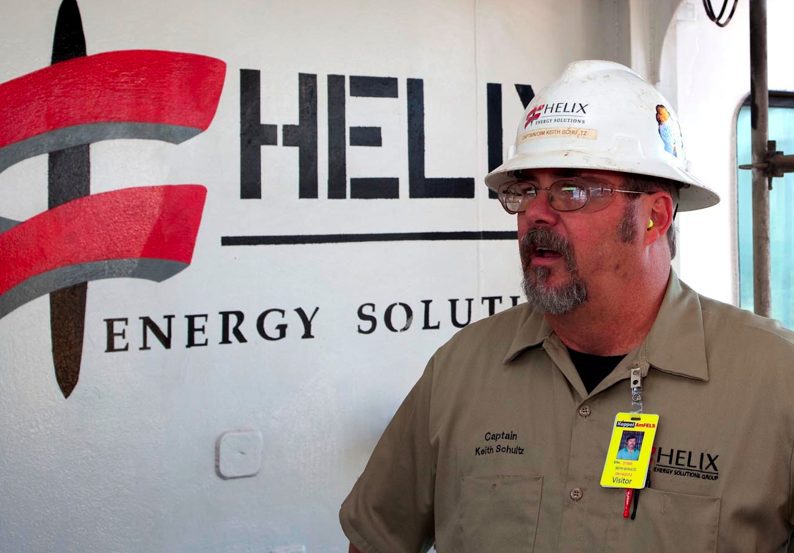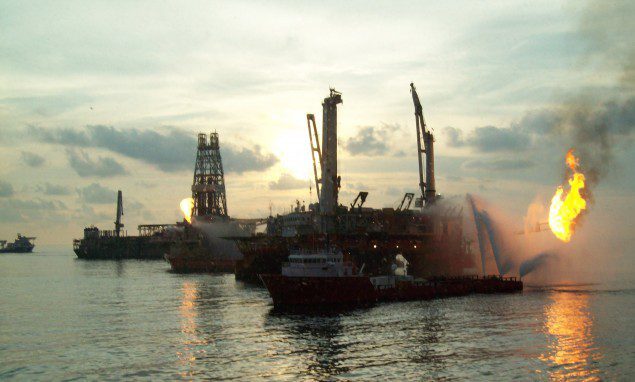China Ramps Up Offshore Wind Projects After Slowdown
(Bloomberg) — China has rebuilt a substantial pipeline of offshore wind projects as the sector recovers from a slowdown that followed the end of national subsidies in 2021, according to...

Q4000, image courtesy Helix ESG
Captain Keith Schultz wakes up every morning on board the Q4000 with a long day ahead of him. Much more than just sailing the vessel safely throughout the Gulf of Mexico, Schultz’s role with Helix Energy Solutions Group also includes managing a crew that works around the clock to enhance oil and gas production from subsea wells for some of the world’s largest offshore oil companies.
With over 34 years of experience between the U.S. Navy, cargo shipping and offshore energy production, Captain Schultz says he is proud to be the captain of Helix Well Ops’ flagship vessel, the Q4000, and has seen her come of age since first joining the company in 2005. Well Ops is the well intervention subsidiary of Helix ESG.
“We have such a unique niche market with this endeavor and the Q4000, our crew and all of our engineers have really set the precedent for the well intervention market,” Capt. Schultz said. “In my opinion, there’s just no one that can do what we do, as efficiently as we do it and I think that says a lot about who we are. “
Waking up to a call from the bridge at 5 a.m., Capt. Schultz is briefed by the overnight Senior Dynamic Positioning Officer (DPO) with what happened while he was sleeping and what to expect for the morning in terms of vessels in the area, weather conditions and the operational condition of ongoing projects.
After that, it’s a marathon of early morning meetings with onshore management teams, clients and senior crew members to update everyone and address any changes in the day’s plan. Capt. Schultz then double-checks the previous evening’s job orders and reviews open and closed work permits to ensure everything ordered is up to spec.

A few times a week the captain makes his rounds to different parts of the vessel to check for anything out of place or that might be a safety concern. Every Saturday while on board, he completes a full inspection of the entire vessel including the columns and pontoons to ensure the Q4000 is meeting safety standards.
Because the Q4000 is a U.S. flagged vessel, the chain of command on board is clear and doesn’t change whether the vessel is connected to a well or not. On some foreign flagged semisubmersibles and drill-ships, it’s the Offshore Installation Manager who becomes in charge of the vessel once subsea operations commence, and the captain only resumes command when the vessel has completed operations. Because of the potential for confusion over who is in control of the vessel, some jurisdictions are beginning to define these issues as a matter of law. To avoid this problem, Helix ESG strives to make sure there is always a single point of responsibility on its vessels by unify the responsibilities of Captain and Offshore Installation Manager in a single person.
To see photos of the Q4000 while dry docked at Keppel AMFels’ shipyard, please click HERE.
“When it’s the same person you’re able to maintain a high level stability regarding well intervention operations and you have greater clarity of what is happening all over the vessel,” said Capt. Schultz. “The key to all of it is having a very close working relationship with the men on the drill floor and the superintendent, so establishing good lines of communication is paramount.”
The Q4000 is known for its large open deck space that makes it easy to configure equipment for deployment, and also for its Multi-Purpose Tower, which allows down hole tools and equipment of varying shapes and sizes to be rigged up and delivered to the seafloor quickly. During his time on board the vessel, Capt. Schultz says that there is one singular event that best defined what the capabilities of the Q4000.

When the Deepwater Horizon incident took place in 2010, the Q4000 was one of few vessels to play a pivotal role in the containment of the damaged subsea well. When compared to traditional drilling rigs, the Q4000’s unique design and subsea capabilities allowed for the quick and efficient performance of the type of intervention services required, Capt. Schultz said.
“We performed a job in 10 days that might have taken another type of vessel up to 30 days to get done,” Capt. Schultz said while explaining how the Q4000 was tasked with capturing oil and gas escaping from a well thousands of feet below the surface and to burn off all the captured oil and gas.
“We started from scratch to implement a full-on production package, including the Evergreen Burner, which we pushed an incredible amount of hydrocarbons through to burn off so it wouldn’t be released into the marine environment. To be up and operational in 10 days is something that was unprecedented and left everyone involved simply amazed.”
As always, the monitoring and reporting of safety conditions is a pressing matter onboard any vessel that is performing complex operations inside actively producing oil and gas wells. On average Capt. Schultz sifts through about 100-150 administrative and operational emails a day to manage his daily reports and address any safety issues on the spot. Capt. Schultz and his crew do their best to prevent lost-time incidents by being “efficient, but safe” at all times.
“The safety culture on board is very strong and much better than other vessels I’ve worked on,” Capt. Schultz said.
Before ending his day, Capt. Schultz debriefs the Senior DPO who will take command when Capt. Schultz retires for the evening to have dinner and sleep. They go over the expected work schedule of the evening and then the captain calls it a day – a long day. On the 28th day of his rotation Capt. Schultz prepares to board a helicopter and fly back to shore in Louisiana where he will return to his home life until the next 28 days are up.
Even the captain knows that he is just one man on a team that depends on everyone to do their job right in order to achieve success. In the captain’s view, on board the Q4000, and across Helix ESG, a sense of diligence permeates from the top down.
“No one part of us is any more important that the other,” he said. “That’s the attitude of everyone out here. We’re a crew and I like to say that, here, we all pull the same oar.”

Sign up for gCaptain’s newsletter and never miss an update

Subscribe to gCaptain Daily and stay informed with the latest global maritime and offshore news


Stay informed with the latest maritime and offshore news, delivered daily straight to your inbox
Essential news coupled with the finest maritime content sourced from across the globe.
Sign Up